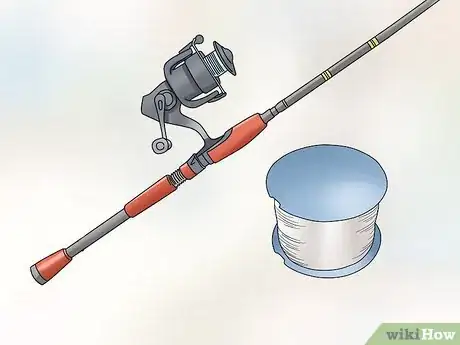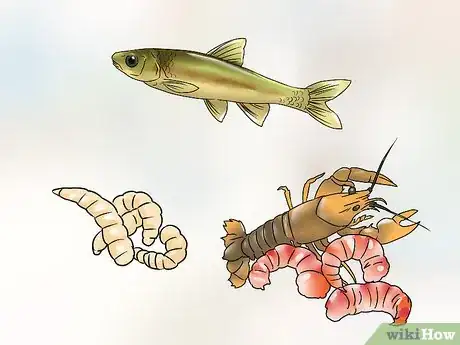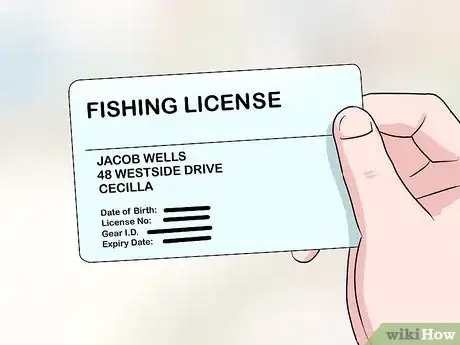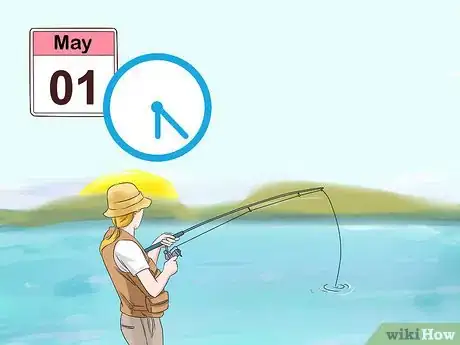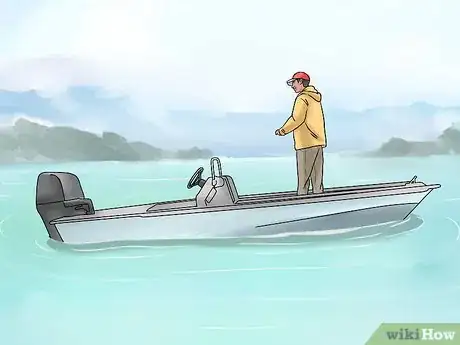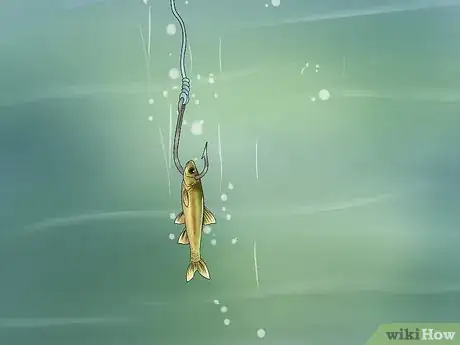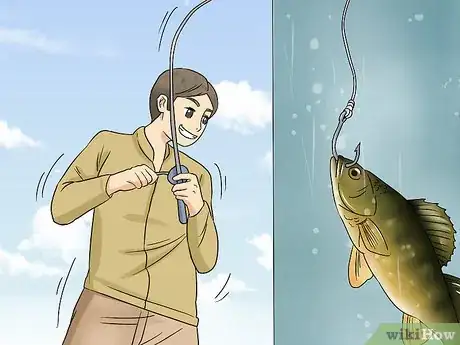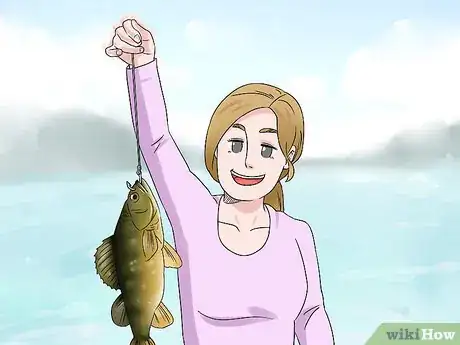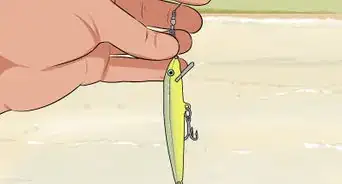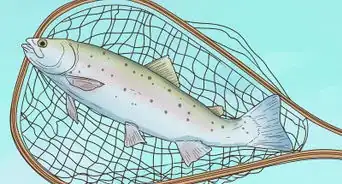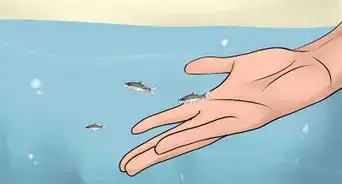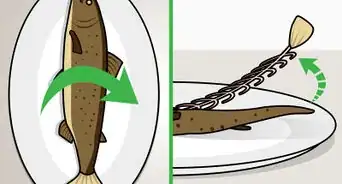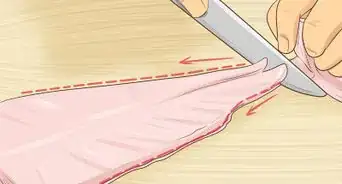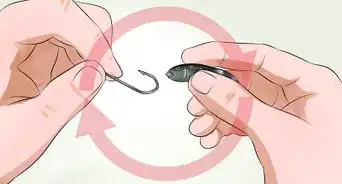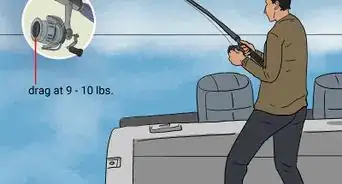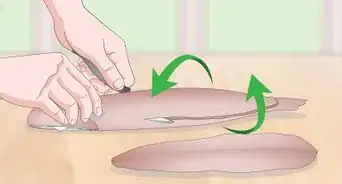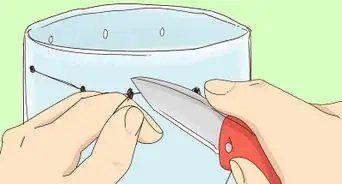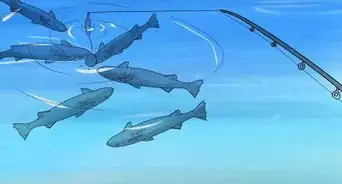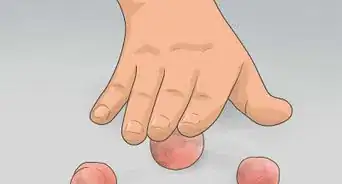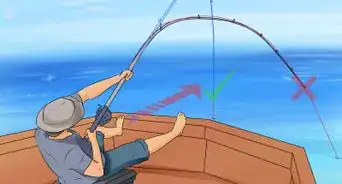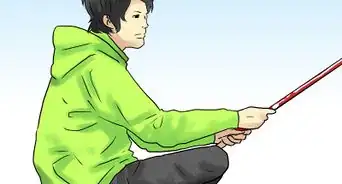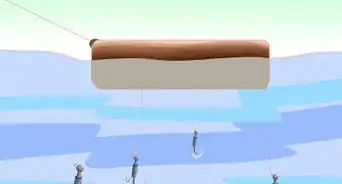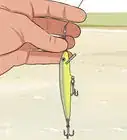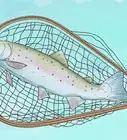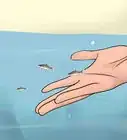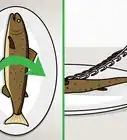This article was co-authored by Kathy Sparrow, MA. Kathy Sparrow is a fly-fishing instructor and adventurer at heart. Kathy is the co-founder and previous manager of the Kingfisher Inn, a fly-fishing lodge on the Lower Laguna Madre in Texas. She is the author of "On the Mother Lagoon: Flyfishing and the Spiritual Journey" and "The Whispered Teachings of Grandmother Trout” a novel conveying the feminine perspective of fly fishing. Kathy is also a Certified Canfield Trainer in Canfield Methodologies. She guides individuals through the process of embracing change by expressing confidence, awareness, and courage through the tools of writing, fly fishing, and intentional conversation. She has a MA in English with an emphasis in Literature and Cultural Studies from the University of Texas-Pan American.
This article has been viewed 182,616 times.
Perch are a common freshwater fish, and popular among fishermen. There are different species around the world, and the yellow and white varieties are found in the United States. Perch is one of the most popular panfish to eat, and is very sweet and flavorful. Perch are normally about 7 to 9 inches long, with any that reach 10 or more inches called "jumbos."
Steps
Getting the Right Gear
-
1Get the proper equipment. This usually means getting a rod, reel, and some fishing line to spool on. The rod should only need a 6 to 8 pound test. Perch are smaller fish, and do not require complicated or expensive equipment.
- You may also want a cooler or stringer to hold you fish, especially if you catch several, or want to keep fishing after a catch.
- Bring a pair of polaroid glasses with you—they'll help you see into the water and figure out what's really around.
- Always have a second rod on standby just in case anything happens.
-
2Get the right bait. Live bait is best, and perch prefer minnows and insect larva. Many anglers have also found crayfish meat to be popular with perch as well.[1]
- Get the right lures. If you can't get live bait, artificial lures such as plugs, jigs, and spinners are good ways to draw in perch. Yellow, white, and yellow-white designs seem to be the most popular, but perch have been known to favor other colors and designs.[2]
- Perch are smaller fish and move quickly, so you'll need a lure that reacts to less movement and is easy for you to keep an eye on.[3]
Advertisement -
3Get a fishing license. Some states require a fishing license depending on where you fish and what kinds of fish you are searching for. Make sure you know your state's laws, and that your license is up to date.[4]
- Be sure to check if the license comes with any catch limits. You don't want to get in trouble for taking too many fish. Plus, that isn't fair to other anglers.
- Check online to see what your region's fishing license requirements are.
Fishing for Perch
-
1Go out at the right time of day. Like other fish, perch are most active when feeding, so if you want to catch one, this is when you should be out there. The time of day they feed depends on the season you are fishing. These are some general guidelines, as the best feeding times can change day by day.[5]
- During late spring and early summer, early morning and early evening hours are best.
- During late summer, late afternoon and evening is best.
- In autumn, the best times are morning, and late afternoon evening.
- During the winter, the low light of late afternoon-evening is good.
-
2Find a spot with deep water. Perch like areas with deep water and structures that block sunlight and provide them places to hide.
- Boat fishing is a good way to get into deep water, and allows you to move quickly if fish aren't biting or the school moves.
- Shore or dock fishing are good places to catch perch. They like the shelter of man-made objects, and can usually be found near overhanging trees or other cover. If you are near the shore, look for areas that will have a steep drop-off into deep water. Your state's Department of Natural Resources may have topographic maps to locate these spots.[6]
-
3Cast your bait. There are a variety of methods you can use to attract perch.[7] Perch, and other fish, like to feed off the ground, so you will need to make sure your line can go deep into the water.
- Bait casting. Cast your line out into an area where the fish might be. Let it sit for a while, reeling in if you feel the need to recast. Aim beyond the point you want to hit, as it's always easier to pull your line back.
- Still fishing. This involves dropping your line into the water and letting it sit, seeing if the fish come to you. You can do this from the shore, a dock or pier, or an anchored boat. This method involves the most patience, as you will not do much more than sit and wait for the fish to bite.
- Trolling. Drop your line into the water, and move, letting your line drag through the water. You can do this by having your boat move slowly through the water, or by walking slowly along a shoreline or pier. If you are in a boat, you will need to keep the engine running lightly to avoid scaring the fish. Some states do not allow motorized trolling, so make sure you are familiar with regulations before trying it.
- Ice fishing. Perch are active in the winter, so you can still catch them even in water that is frozen over. Fish in the winter are move more slowly, so if you find them they probably won't go to far. With the thick ice, having an electronic fish finder can help you figure out the best place to cut into the ice.
-
4Get a bite. Perch are light fish, so you will have to be quick about noticing when you get a bite. Once you see your line move, set your hook by pulling up quickly on the rod. As you reel in the line, pull your rod upward as well. You don't want to pull too hard, as you might pull your hook out of the fish.
- It may help to have a bucket or small net to hold the fish once you get it out of the water.
-
5Keep fishing if you catch one. Perch are schooling fish, so if you find one, you'll find many more. Once you find a school, keep re-baiting your hook to get as many as possible. Schools move around, so if your catches dry up, you'll need to move.[8]
- By the same token, if you aren't catching any fish, move. Perch stay in their schools, and if they aren't in one place, look for another one.
- By this point, you may be interested in filleting your perch.
Community Q&A
-
QuestionNot enough information for a real beginner. Do you let your bait actually sit on the bottom? This part was unclear.
 PaulyoutdoorsCommunity AnswerIt depends on how hungry the perch is. Laying a worm on the bottom will absolutely catch perch, but it's not only limited to that particular technique. Sometimes keeping your lure/bait a foot off the bottom works well, too. Sometimes casting small soft plastics (Mister Twisters, for example) with a slow retrieve also works well.
PaulyoutdoorsCommunity AnswerIt depends on how hungry the perch is. Laying a worm on the bottom will absolutely catch perch, but it's not only limited to that particular technique. Sometimes keeping your lure/bait a foot off the bottom works well, too. Sometimes casting small soft plastics (Mister Twisters, for example) with a slow retrieve also works well. -
QuestionHow big does a perch have to be to keep it?
 Community AnswerThis depends on your state Game Fish & Parks regulations. You can pick up a copy of each year's guide free in a bait shop or sporting goods store, or reference on the state's website.
Community AnswerThis depends on your state Game Fish & Parks regulations. You can pick up a copy of each year's guide free in a bait shop or sporting goods store, or reference on the state's website. -
QuestionCan I just put a piece of my sandwich on the hook and expect to catch a perch?
 Community AnswerNo, not really. Perches are predators and sandwiches are not the best lure for them.
Community AnswerNo, not really. Perches are predators and sandwiches are not the best lure for them.
References
- ↑ http://www.fishingtipsdepot.com/perch-fishing-tips/
- ↑ http://www.iowadnr.gov/Fishing/Fishing-Tips-How-Tos/How-to-Fish-For-/Yellow-Perch-Fishing
- ↑ http://www.fishingtipsdepot.com/perch-fishing-tips/
- ↑ http://takemefishing.org/fishing/license/
- ↑ http://www.iowadnr.gov/Fishing/Fishing-Tips-How-Tos/How-to-Fish-For-/Yellow-Perch-Fishing
- ↑ http://www.iowadnr.gov/Fishing/Fishing-Tips-How-Tos/How-to-Fish-For-/Yellow-Perch-Fishing
- ↑ http://takemefishing.org/fishing/fishopedia/species-explorer/perch-yellow/
- ↑ http://www.fishingtipsdepot.com/perch-fishing-tips/
About This Article
To catch perch, start by getting some live bait, such as minnows and insect larva. Next, find a spot with deep water and overhanging trees or man-made objects that block sunlight, as these are the places where perch like to hang out. Then, cast your bait, and let your line go deep since perch like to feed off the ground. When you get a bite, gently reel in the line as you pull up on the rod. To learn how to tell the best times of day to catch perch depending on the season, keep reading!
